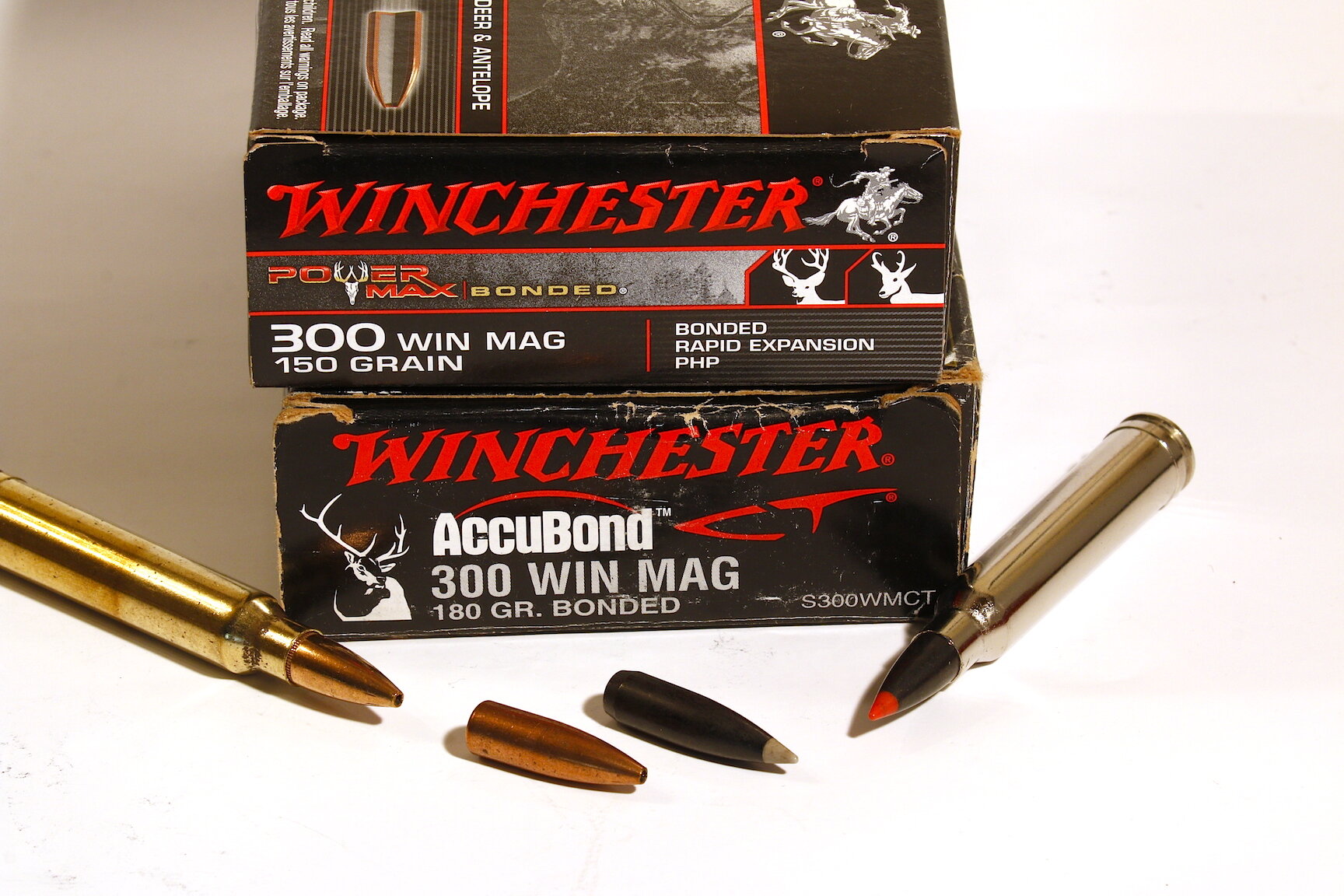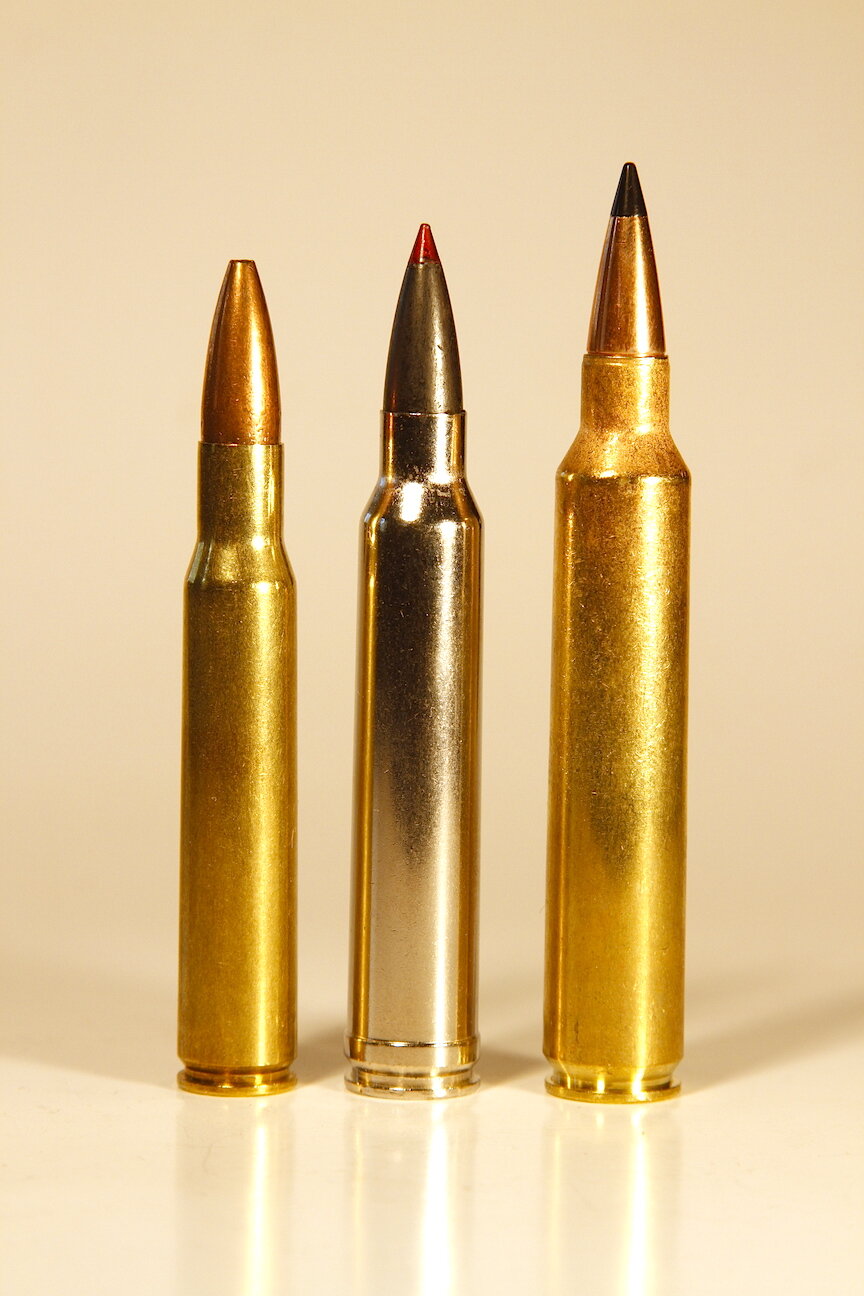300 Winchester Magnum -- World Beater
Winchester hit a home run in 1963 with its new 300 Winchester Magnum, now the most popular 300 magnum in the world.
During 150 years of firearms and ammunition innovation, Winchester has created veritable icons, products that define their categories. Like the Model 94 lever-action, the 243 Winchester Cartridge, the Model 12 pump-action shotgun and the Model 70 bolt-action rifle. But of all Winchester products, none is arguably more useful, versatile, long-lived, effective and impressive than the 300 Winchester Magnum.
Certainly the 30-30 Winchester has accounted for more game and sold more copies. The 270 Winchester is more unique. But for all-round performance and versatility, it’s hard to beat the 300 Win. Mag.
The 300 Win. Mag., of course, fires bullets .308-inches in diameter, the famous 30-caliber. There is nothing magical about this bullet diameter other than that it strikes a good balance between big enough and too big. Bullets that are too large in caliber need to be long and heavy to be ballistically efficient. That requires a lot of powder to push. This increases recoil and/or gun weight. Bullets that are too small in caliber reduce recoil and/or gun weight, but may not have sufficient mass and downrange energy for maximum tissue destruction.
A single shot from this custom M70 300 Win. Mag. tipped this 41-inch bull gemsbuck on its nose.
Winchester’s 30-30, originally released in 1895 as the 30 Winchester Center Fire, introduced both smokeless powder and the 30-caliber to a mass audience. There had been a rather obscure 30-30 Wesson black powder cartridge around 1880, but the all-new Winchester 30-30 is what put the .308 bullet on the map as America’s deer hunting standard.
The U.S. military then chose the 30-caliber .30-06 Springfield as the right balance shortly after the Spanish American war of 1898 introduced us to the deadly M1893 Mauser bolt-action. That fast-loading rifle fired the “Spanish Hornet,”the 7x57mm Mauser cartridge. The 30-06 case is essentially an elongated modification of the 7x57mm. The bolt-action Model 1903 Springfield service rifle had so much in common with the Mauser M98 that Mauser Werke sued and the U.S. had to pay it $250,000 in royalties.
During WWI and WWII, the 30-06 Springfield and M1 Garand introduced millions of Americans to the 30-06 cartridge. It proved as effective on 200-pound deer as 200-pound enemy soldiers, and by mid-century big game hunters like Theodore Roosevelt, Earnest Hemingway and Stewart Edward White had proven it deadly on everything from kudu and rhino to lions and buffalo. The 30-caliber mystique continued to grow.
Not to be upstaged by their American cousins, the British reshaped their 375 H&H belted magnum to 30-caliber and released it as the Holland Super 300, soon to be better recognized as the 300 H&H Magnum. It out-muscled the 30-06 by about 200 feet per second. The arms race was on.
The world is awash in 30-caliber cartridges, but the all round champ is (5th from right) the 300 Win. Mag. To its left is the 300 H&H.
Roy Weatherby actually leaped ahead in that race with his 300 Weatherby Magnum in 1944. It bested the 300 H&H by about 400 fps, but it was rarely chambered in anything but expensive Weatherby rifles or customs.
Winchester didn’t hit the streets with its 300 magnum until 1963, almost two decades after the Weatherby appeared. To its credit, the company did not try to beat Weatherby’s speed record, even though it used the same basic 375 H&H belted magnum case as the foundation for its new round. Instead, Winchester wisely shortened the case enough so that it would conveniently function through standard-length (30-06 length) rifle magazines and actions. They shoved the shoulder forward significantly to regain some lost powder capacity. This left slightly less than a full caliber of neck for grabbing seated bullets. This is often criticized as a shortcoming, but I’ve never seen a 300 Win. Mag. cartridge that wouldn’t shoot accurately due to bullets getting bumped out of alignment.
Elk are the perfect quarry for the 300 Win. Mag., the but cartridge is capable of taking any game.
The 300 Win. Mag’s resulting power reservoir (it holds 70 to 80 grains of most suitable powders) is enough to drive 180-grain bullets 3,000 to 3,160 fps from 24-inch barrels. That is 300 to 100 fps slower than the Weatherby, but 100 to 300 fps faster than the 300 H&H. And, because the Win. Mag. doesn’t require a magnum length action, virtually every rifle maker chambers for it, even in some lever-action and autoloading rifles.
Free recoil energy in an 8-pound rifle shooting full-power, 180-grain 300 Win. Mag. loads is about 28.62 foot-pounds, and the recoil velocity of that rifle is about 15.18 fps. Compare this to a 30-06 180-grain load in the same rifle. Free recoil energy is 22.4 foot-pounds and recoil velocity is 13.43 fps. Free recoil from a 300 Wby. Mag. hits 31.52 foot-pounds and recoil velocity climbs to 15.93 fps. The 300 Win. Mag., then, generates about as much recoil as most shooters enjoy handling, which is a big part of why this is the most popular 300 magnum cartridge in the world — and will probably remain so.
The 300 Win. Mag., center, is the perfect compromise between the 30-06 (left) and 300 RUM.
At the other end, a sleek 180-grain bullet like Winchester’s Ballistic Silvertip or AccuBond CT will deliver more than 1,750 foot-pound of energy at 500 yards, more than the 30-30 delivers at 200 yards.
Finally, like the 30-06, the 300 Win. Mag. is capable of shooting bullet weights from 100-grain plinkers to 220-grain moose and bear thumpers. You’ll probably have to load your own at these extreme ends, but that’s the price you pay for the ultimate versatility from the world’s most popular, versatile, do-everything 300 magnum.
L. to R.: 270 Winchester, 30-06, 7mm Rem. Mag., 300 Win. Mag. Winchester maximized powder space in the belted magnum case shortened to fit standard-length actions.
# # #

















